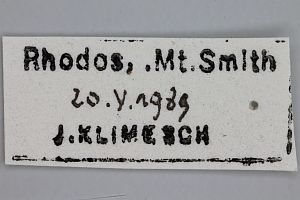Inhalt
1. Lebendfotos
1.1. Falter
1-2: Österreich, Niederösterreich, "Hartberg" 6 km SSE Neunkirchen, Schwarzerlenbruch in Rotföhrenwald, 480 m, 5. August 2004 (Fotos: Peter Buchner), det. Peter Buchner
3: Deutschland, Nordrhein-Westfalen, Hagen, am Licht, Dachterrasse, Nähe Bucheneichenwald, 150-200 m, 15. Juli 2013 (fot.: Josef Bücker), det. Dieter KrembForum
4-5: Deutschland, Bayern, Bayerischer Wald, Furth im Wald, Dieberg, 22. Juli 2013 (det. & fot.: Ingrid Altmann), conf. Helmut KolbeckForum
6: Deutschland, Niedersachsen, TK 2621.13, Selsingen, Garten, Lichtfang, 16. Juli 2013 (fot.: Frank Geisler), det. Helmut DeutschForum
7-8: ♀, Österreich, Steiermark, Graz, St. Peter, ca. 380 m, Garten, Mischwaldrand, 17. Juli 2018, am Licht (det. & Fotos: Horst Pichler, Vorschaubilder redaktionell bearbeitet)Forum
9-10: Österreich, Steiermark, Graz, Garten am Stadtrand, 341 m, 23. Juni 2019, Tagfund (Fotos: Ingrid Windisch)Forum
11-12: ♂, Österreich, Steiermark, Graz, St. Peter, ca. 380 m, Garten, Mischwaldrand, am Licht, 10. Juli 2019 (det. & fot.: Horst Pichler)Forum
13: Bulgarien, Burgas, lichte Waldstruktur bei Emona, 216 m, 42.723573, 27.886479, 23. August 2019, am Licht (leg., det. & fot.: Friedmar Graf)Forum
14-17: Deutschland, Niedersachsen, Landkreis Lüneburg, ehemaliger Breetzer Sandabbau, teilweise ruderale Brache mit viel Ginster und Kiefernwald, 30 m, 11. August 2019, am Licht (Foto: Frank Stühmer)Forum
2. Diagnose
2.1. Weibchen
1: ♀, Finnland, Åland, Lemland, 10. Juli 1952 (fot.: Pekka Malinen, kleines Bild redaktionell an Standardmaße angepasst), leg. Lankiala, coll. LTKM
2.2. Geschlecht nicht bestimmt
1-2: Griechenland, Daten siehe Etikett (fot.: Michel Kettner), coll. ZSM, "Klimesch-Sammlung", dort unter Celestica angustipennis einsortiert
2.3. Genitalien
2.3.1. Männchen
1: ♂, Österreich, Steiermark, Graz, St. Peter, ca. 380 m, Garten, Mischwaldrand, am Licht, 10. Juli 2019 (det. & fot.: Horst Pichler)Forum
2.3.2. Weibchen
1: ♀, Österreich, Steiermark, Graz, St. Peter, ca. 380 m, Garten, Mischwaldrand, 17. Juli 2018, am Licht (präp., det. & Fotos: Horst Pichler)Forum
2.4. Erstbeschreibung
1-4: Millière (1854: 64-65 + pl. 3 fig. II 5) [nach Copyright-freien Scans auf www.biodiversitylibrary.org]
3. Biologie
3.1. Habitat
1: Bulgarien, Burgas, lichte Waldstruktur bei Emona, 216 m, 42.723573, 27.886479, 23. August 2019 (fot.: Friedmar Graf)Forum
2: Deutschland, Niedersachsen, Landkreis Lüneburg, ehemaliger Breetzer Sandabbau, teilweise ruderale Brache mit viel Ginster und Kiefernwald, 30 m, 11. August 2019 (Foto: Frank Stühmer)Forum
4. Weitere Informationen
4.1. Andere Kombinationen
- Argyresthia cyaneimarmorella Millière, 1854 [Originalkombination]
4.2. Synonyme
- Tinea angustipennis Herrich-Schäffer, 1854
4.3. Faunistik
Šumpich (2013: 17) meldete die Art als neu für Kroatien: "Pag, Novalja – Potočnica, 26.–30.viii.2001, 1 ♂, Biograd, 5.–12.vii.2003, 1 ♂. Widely distributed in Europe, but without evidence from Croatia so far. First record from Croatia."
4.4. Literatur
- Gaedike, R. (2009): New of poorly known Tineidae from Mauretania, Morocco, Algeria, and Tunisia. — Beiträge zur Entomologie 59 (2): 489-512. Keltern. [PDF auf contributions-to-entomology.org]
- Gaedike, R. & J. Kullberg (2016): A contribution to the Dryadaulidae and Tineidae of Lebanon, with two species new to science (Lepidoptera). — Contributions to Entomology 66 (1): 154-152. [PDF auf contributions-to-entomology.org]
- Kovács, Z. & S. Kovács (2023): An overview of the Romanian Meessiidae, Eriocottidae and Tineidae (Lepidoptera, Tineoidea) summarizing the current knowledge in an updated and annotated checklist. — Entomologica romanica 27: 1-34. [PDF auf entomologica-romanica.reviste.ubbcluj.ro]
- Erstbeschreibung: Millière, P. (1854): Description de nouvelles espèces de microlépidoptères. — Annales de la Société entomologique de France, Troisième Série 2: 59-68, pl. 3. Paris.
- [SCHÜTZE (1931): 11]
- Šumpich, J. (2013): Faunistic records of some Microlepidoptera from Croatia. — Entomologia Croatica 17 (1-4): 13-33. [PDF auf hrcak.srce.hr] bzw. [PDF auf entomologicalservice.com]



![Vorkommen in Österreich [Huemer (2013: NR 0432)]](/res/img/flag/at.png)
![Vorkommen in Norwegen (außer Spitzbergen und Jan Mayen) [Aarvik & al. (2017): Nordic-Baltic Checklist]](/res/img/flag/no.gif)
![Vorkommen in Dänemark (außer Färöer-Inseln und Grönland) [Aarvik & al. (2017): Nordic-Baltic Checklist]](/res/img/flag/dk.gif)
![Vorkommen in Schweden [Aarvik & al. (2017): Nordic-Baltic Checklist]](/res/img/flag/se.gif)
![Vorkommen in Finnland (außer Åland-Inseln) [Aarvik & al. (2017): Nordic-Baltic Checklist]](/res/img/flag/fi.gif)

![Vorkommen in Russland (europäischer Teil bis Manytsch-Niederung) [Sinev (2019)]](/res/img/flag/ru.gif)
![Vorkommen auf der Krim [Sinev (2019)]](/res/img/flag/ua-kri.gif)
![Vorkommen in Estland [Aarvik & al. (2017): Nordic-Baltic Checklist]](/res/img/flag/ee.gif)
![Vorkommen in Lettland [Aarvik & al. (2017): Nordic-Baltic Checklist]](/res/img/flag/lv.gif)
![Vorkommen in Litauen [Aarvik & al. (2017): Nordic-Baltic Checklist]](/res/img/flag/lt.gif)
![Vorkommen in Polen [Buszko J. & J. Nowacki [eds] (2017): A Distributional Checklist of the Lepidoptera of Poland]](/res/img/flag/pl.gif)
![Vorkommen in Tschechien [Laštůvka, Z. & J. Liška (2011): Komentovaný seznam motýlů České republiky]](/res/img/flag/cz.gif)

![Vorkommen in Ungarn [Pastorális et. al. (2018): A Magyarországon előforduló molylepke-fajok névjegyzéke]](/res/img/flag/hu.gif)
![Vorkommen in Großbritannien [Agassiz, Beavan & Heckford (2013): Checklist of the Lepidoptera of the British Isles]](/res/img/flag/gb.gif)
![Vorkommen in Belgien [De Prins(2016): Catalogus van de Belgische Lepidoptera]](/res/img/flag/be.gif)
![Vorkommen in den Niederlanden [Kuchlein & de Vos (1999): Annotated Checklist of the Dutch Lepidoptera]](/res/img/flag/nl.gif)
![Vorkommen in Luxemburg [Hellers (2016): Micropterigidae - Tineidae]](/res/img/flag/lu.gif)
![Vorkommen in Frankreich (europäisches Territorium ohne Korsika) [Vandromme et al. (2020): Liste systématique et taxinomique des Lépidoptères de France]](/res/img/flag/fr.gif)
![Vorkommen in Spanien (Festland) [Vives Moreno A. (2014)]](/res/img/flag/es.gif)
![Vorkommen auf den Kanarischen Inseln [Vives Moreno, A. (2014)]](/res/img/flag/es-cn.png)
![Vorkommen in Portugal (Festland) [Corley (2015): Lepidoptera of Continental Portugal]](/res/img/flag/pt.gif)
![Vorkommen auf Madeira [Aguiar & Karsholt (2006)]](/res/img/flag/pt-ma.png)
![Vorkommen in Italien (Festland und kleine festlandsnahe Inseln) [Gaedike et al. (1995): Checklist delle Specie della Fauna Italiana 81]](/res/img/flag/it.gif)
![Vorkommen in Slowenien [Deutsch H. (2019): Contribution to the Lepidopteran fauna of Slovenia]](/res/img/flag/si.gif)

![Vorkommen in Serbien [Jakšić (2016): Tentative Checklist of Serbian microlepidoptera]](/res/img/flag/rs.gif)
![Vorkommen in Nordmazedonien [Klimesch, J. (1968)]](/res/img/flag/mk.gif)
![Vorkommen in Rumänien [Rákosy L. & M. Goia (2021): Lepidopterle din România: lista sistematică şi distribuţie]](/res/img/flag/ro.gif)

![Vorkommen in Griechenland (Festland und festlandsnahe Inseln) [Gozmany (2012): The Lepidoptera of Greece and Cyprus Volume I]](/res/img/flag/gr.png)
![Vorkommen auf Kreta [Nel & Nel (2003); Gozmany (2012): The Lepidoptera of Greece and Cyprus Volume I]](/res/img/flag/gr.gif)
![Vorkommen in Iran [Rajaei & Karsholt (eds.) (2023)]](/res/img/flag/ir.gif)
![Vorkommen in Libanon [Gaedike & Kullberg (2016)]](/res/img/flag/lb.gif)
![Einzelnachweis in Tunesien [Gaedike (2009: 494)]](/res/img/flag/tn.gif)




























